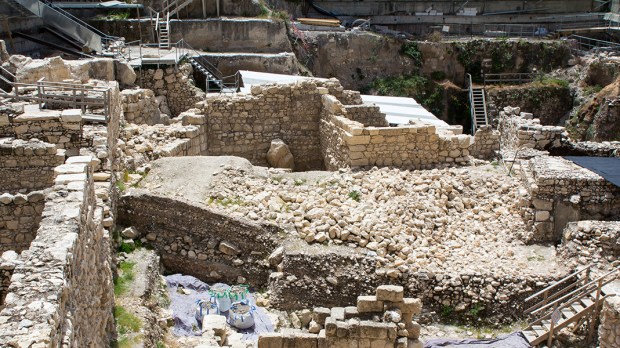For most experts in the field of archaeology, excavation sites are windows into the past offering invaluable information and artifacts that can help us piece together the cultural histories of our species. For the team currently examining the site of Solomon’s Temple, however, the work is yielding crucial data that can assist modern science — specifically the study of the Earth’s magnetic fields.
Solomon’s Temple, also known as The First Temple, was one of the most important landmarks of the ancient world; so much so that an entire era was named for it. While there is little historical documentation of this era, what records we have of the important religious structure have allowed most academics to agree upon the consensus that it fell in 587 BC, when Nebuchadnezzar II laid siege to Jerusalem.
A firm understanding of this destruction date is important, but we’ll come back to that. First, lets discuss the scientific field of geomagnetism.
According to ScienceDirect, geomagnetism is the study of the magnetic field of Earth. This field helps us to understand more about the way the Earth works and interacts with other astral bodies. A sub-field of geomagnetism is paleomagnetism, which examines the remnant magnetization in rocks and sediments to infer the magnetic field of ancient times. This method can trace what we do not see in the present-day field, that is, magnetic reversals and polar wander.
A report from Jonathan Landon of the Biblical Archaeology Society (BAS) explains that the team at Solomon’s Temple have been able to analyze the geomagnetic field of the building at the time of its destruction. These findings have been compared to the Earth’s current geomagnetic field, which in turn can help them to determine the changes that have taken place in Earth’s magnetic fields over the last 2,600 years, and even help them predict changes that will come in the future.
Landon, working off the paper submitted by the archaeological team to Plos One, explains that the First Temple offers such a prime specimen for study because the fires burned so hot that the materials within would have lost their magnetic pull, only to realign with the geomagnetic pull that was present 587 BC. This is why it is so important to fasten our understanding of the date of the fall of the First Temple; in order to ensure an accurate timeline of the geomagnetic changes over the course of the last several thousand years.
The full report is a bit dense, but well worth a look. For more information from Jonathan Landon, try this one.

